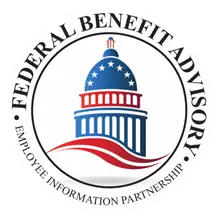If you’re a FERS (Federal Employee Retirement System) or CSRS (Civil Service Retirement System) employee, you’re likely aware of the government-provided health benefits that you’re eligible for.
What you may not know, however, is that most working-class adults are automatically enrolled in Medicare Part A. For federal employees who already have health insurance provided through their workplaces, this can give rise to some strange conflicts and even stranger questions.
This article will work to clear up any lingering inquiries you might have about the health benefit conflicts caused by Medicare, as well as provide you with accurate information on how you can handle the conflicting health insurance programs.
What Is Medicare?
Medicare is a government-sanctioned health insurance program that provides medical benefits to adults over the age of 65, younger people with certain disabilities, and those with End-Stage Renal Disease (ESRD).
There are three sections to this plan, which are designed to accommodate three different types of medical needs:
Medicare Part A (Hospital Coverage)
Medicare Part A, otherwise known as hospital insurance, covers in-patient hospital visits, nursing facility stays, hospice care, and a few other types of emergency medical situations.
Medicare Part B (General Medical Coverage)
This Medicare plan covers your general health expenses, like doctor visits and outpatient care. It can also be used for various medical supplies, checkups, and preventative procedures.
Medicare Part D (Prescription Drug Coverage)
Medicare Part D provides prescription drug coverage for most types of medically necessary drugs, as well as recommended shots and vaccinations.
As stated, the vast majority of working-class adults are automatically enrolled in Part A of the Medicare program. Over the course of your career, you pay taxes into this branch of Medicare, which results in coverage under that part of the program in your retirement years.
Additionally, once you are eligible for Medicare Part A, there is no way to opt out. Regardless of whether you want it or not, you may not deny Part A coverage. For this reason, this article will mostly discuss Medicare Part B and D.
The other branches of Medicare, however, are optional. This leaves many FERS and CSRS employees with a question: “Should I stack Medicare with my existing health coverage when I retire?”
Is it Beneficial to Have Both Medicare and FEHB Coverage?
FEHB, or Federal Employee Health Benefits, coverage is something that all government employees are given the option to enroll in. For those who take advantage of it, a small fee is automatically deducted from their paychecks each pay period to cover the premium.
At retirement, all federal employees have the option to continue their FEHB coverage. However, they must continue to pay the monthly premium costs on their own.
Should they choose to do so, the FEHB will become backup coverage for their emergency care at the very least. According to OPM (the Office of Personnel Management), once Medicare goes into effect automatically, it is treated as your primary coverage at all times. Then, if there are things that Medicare doesn’t cover or won’t pay for entirely, your FEHB insurance can kick in at that point.
For some employees, this could save money. For most, however, paying the FEHB premium expense is a waste of retirement earnings. In fact, most federal retirees find that there’s no benefit at all to paying both the Medicare Part B and FEHB premiums.
Which is Better, Medicare or FEHB Coverage?
The answer to which program is better isn’t something that comes with a straightforward answer. It largely depends on the lifestyle you plan to lead after retirement and what sort of doctors you expect to be seeing.
For example, Medicare Part B covers a significant portion of the out-of-pocket costs for visiting an out-of-network healthcare professional. This can be extremely useful if you expect to be traveling a lot or live in a rural area with few options for general care.
On the other hand, FEHB covers the cost of most in-network care with pleasantly small copayments at the time medical services are rendered. Not to mention, some places simply don’t accept Medicare.
This is just one of the lifestyle factors you have to take into consideration when choosing between FEHB coverage and Medicare coverage. Other issues you might have to take into account are your budget and whether you need to cover someone other than yourself. Additional fees apply for extra beneficiaries.
How Do I Enroll?
There are different methods for enrolling in the two different types of health insurance. You can read up on them below:
FEHB
Retaining your FEHB coverage after retiring is relatively easy. All you need to do is have retained coverage for at least 5 years prior to retirement and leave your place of work under an immediate annuity. OPM should automatically carry your health benefits over.
Medicare
To sign up for Medicare, first determine which Parts of Medicare you’d like. Then, you can apply online on the Social Security Administration website during one of the predetermined enrollment periods (sometimes referred to as Open Season). This year (2021), the open enrollment season spans from October 15th to December 7th.
There are special enrollment periods available, but those are not applicable to the majority of federal government employees. If you think you may be eligible for special enrollment, we recommend visiting the Social Security Administration website to verify.
Conclusion
Unfortunately, the question of whether or not to maintain both types of coverage (or simply have one or the other) is not something we can answer in this article. There are several considerations that must be made about your lifestyle, which only you are currently qualified to make.
If you are unsure of which coverage is best for you, however, you can contact one of our dedicated retirement planners and explain your situation, as well as the relevant aspects of your expected retirement lifestyle.
Once they know your situation, they can explain the pros and cons of each in-depth, answer any questions you may have, and help you come to a final decision before open enrollment is finished for the year.
We’re here to help you retire comfortably and securely, so reach out today for professional federal retirement advice. You’ll want to act quickly, though—there isn’t much time left!


